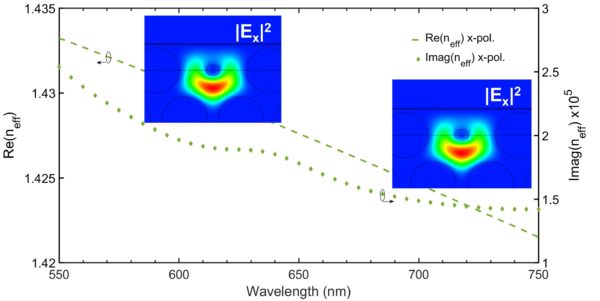Join Optiwave for an informative & instructional webinar on Photonic Crystal Fiber Sensors.
Photonic crystal fiber (PCF) is well-suited for sensing applications. It is a flexible platform for tailoring modal dispersion, confinement, and birefringence. In this webinar, we demonstrate how vector finite element method (VFEM) mode solver of OptiMode software can be used for accurate and efficient design, simulation and analysis of PCFs used in sensors applications. Two examples of hybrid plasmonic-PCF bio-chemical and temperature sensors are demonstrated.


